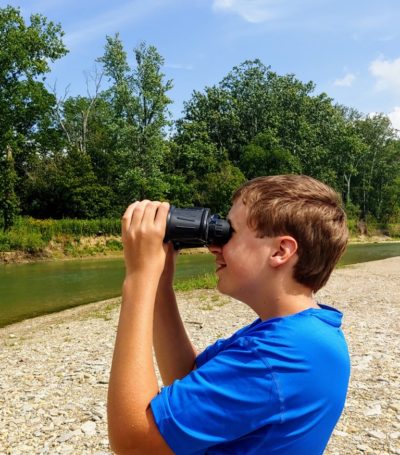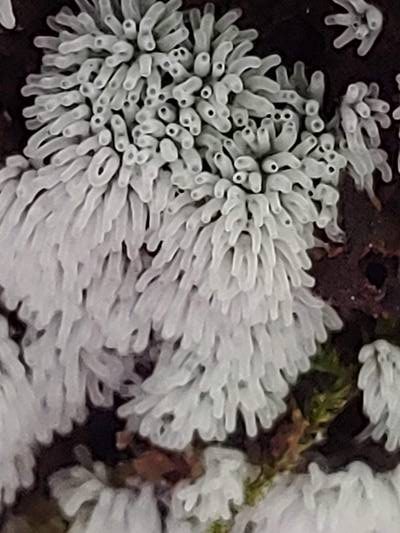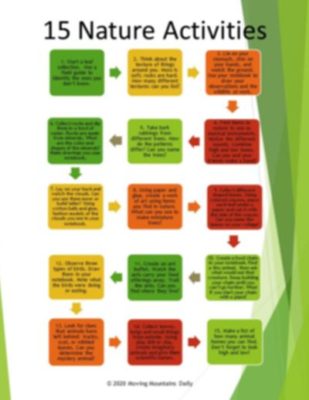Exploring the great outdoors, whether in your yard or a park, gives students a feel for the environment that cannot be replicated in a textbook. Nature Activities, like watching a snail crawl on a plant or a hawk soar on wind current will trigger your child’s curiosity. Let observation science work its magic and instill the awe of the world around them while your students examine all-things-nature.
15 Nature Activities to do in your Backyard
I asked Andrew to list 15 nature activities to do in your backyard that will spark your child’s inner scientist. These outdoor activities will set the stage for bringing science indoors for a more in depth study. When awe swells to excitement you have the perfect time to expand the subject by reading, making lapbooks, or allowing independent research.

Science Supplies for Nature Activities
I suggest keeping a dedicated science backpack for each student. Our backpack hangs in the utility room and is an easy grab on the way out. Here is what you would find in Andrew’s Science Pack:
- Magnifying Glass
- Binoculars
- Nature Pencil/Pen/Colored Pencils/Colors
- Notebook, (Lined or unlined)
- Sunscreen
- Water bottles
- Cooling towel
- Hat/Sunglasses
- Garbage bags (for cleaning up what others have left behind)
If we are searching for something in particular like leaves, or mushrooms, we carry a comprehensive field guide.

LEAVE NO TRACE
Science activities and spending time outdoors is a good time to discuss ‘Leave no Trace‘. One of the best lessons we can teach children is to practice good conservation ethics and why it is important to minimize our impact on the environment. We need to make sure we leave no trace by cleaning up our own garbage and making sure we respect the land. Sometimes science observation leads to seeing the mess that others leave behind. Carrying garbage bags means we can eliminate the unsightly mess while making the environment a safe place for all who live and visit there.
Hands-on nature activities
Through hands-on nature activities, children build self-confidence, as well as analytical and creative thinking skills. Outdoor science observation is the art of seeing. Look at a mushroom while standing over it, then look at it while laying on the ground. These different perspectives teach students to study an object from all angles. Perspective drawings can be made in the notebook. Sometimes taking a photo of fungi and then zooming in gives a perspective that the eye cannot see.

15 Nature Activities to do in your Backyard
Our foot path of nature activities will get you started on your outdoor journey to discovering the natural world. Never tell a child about what they are seeing if they can discover the answers for themselves. Ask questions when needed, but allow the student to be in control of how they observe and note discoveries in their notebook. As the parent or teacher, you might have to teach different techniques like how to take a rubbing by using the side of a crayon. However this is the one time you don’t have to be in control, instead it is your turn to observe your kids!

Discuss Observations
Make time to discuss your student’s journals and observations, the information they learned, and any questions. Be honest. If you aren’t familiar with a topic, then read a book or watch a YouTube video together. There’s nothing that says parents and teachers can’t learn too!
Support Moving Mountains Daily by using the links to our purchase suggestions. We will never suggest an item we havn’t used. We receive a small commission (at no extra cost to you) so we can continue to create helpful free content. Thank you, we appreciate it!
Suggested Journal for Beginning Scientists:
Suggested Journal for the more Mature Scientist:
Oh… one more thing:
Last but not least, don’t let science stop because the weather changes. Enjoy Mother Nature on all levels!




